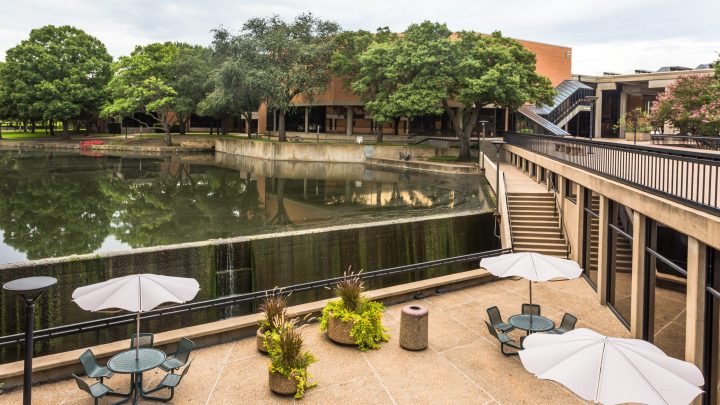
Texas’ education funding revamp brings big changes

When Ángel García Donjuán found out he could take free dual credit courses at his local community college while attending high school in Dallas, he decided to take full advantage.
“English 1300, 1200 you know — basic prereq courses. U.S. history, Texas history,” he said.
Now, García Donjuán is in his junior year studying urban policy and planning at University of North Texas. Those credits saved his family roughly $7,000 on tuition, he said, and exposed him to higher ed as a first-generation college student.
“For me, dual credit was free and accessible,” he explained.
But when García Donjuán spoke to his cousins in the Houston area, he realized not all Texas students have the same access. “They weren’t able to participate at all because it was too expensive.”
It led him to support the community college funding overhaul in Texas that went into effect this fiscal year. And institutions across the state are feeling the difference with additional money coming in.
The new system doesn’t just bump up the funding; the state is trying to address workforce challenges and meet the rising interest in education outside traditional four-year degrees. This funding structure is bringing $1 billion to 50 institutions across the state. One of them is the Alamo Colleges District in San Antonio, run by chancellor Mike Flores.
“We’re fortunate to serve about 73,000 students this past fall semester at five colleges,” he said. “78% of our students are students of color.”
This year, Flores said the revamp is bringing his schools $20 million in additional funding. Some of that is going toward advocacy centers that help students stay in school when they’re in a bind.
“Perhaps they have to go to the emergency room and they need to pay that deductible,” Flores said. “And with the additional state funding this year we now provide 24/7 mental health care.”
The new formula doesn’t just pull from a bigger pot of money. It also moves away from the traditional enrollment-based approach, according to Jonathan Feinstein, who advocated for the new law with The Education Trust.
“Now, a majority of those dollars that community colleges receive will be driven by student success,” he said.
Success — like getting credentialed in a high demand field, transferring to a four-year institution or completing dual credit courses while in high school.
Many states are reconsidering their approach to community colleges, which tend to end up with less public funding while serving more disadvantaged populations.
“They’re serving local students that want to transfer to four-year institutions,” said Richmond Fed economist Laura Dawson Ullrich. “They’re serving high school students that then want to take those credits and typically transfer or maybe get a work force credit while they’re in high school. ”
But, she added, shorter-term programs still lag behind in funding.
There’s a lot happening in the world. Through it all, Marketplace is here for you.
You rely on Marketplace to break down the world’s events and tell you how it affects you in a fact-based, approachable way. We rely on your financial support to keep making that possible.
Your donation today powers the independent journalism that you rely on. For just $5/month, you can help sustain Marketplace so we can keep reporting on the things that matter to you.

















